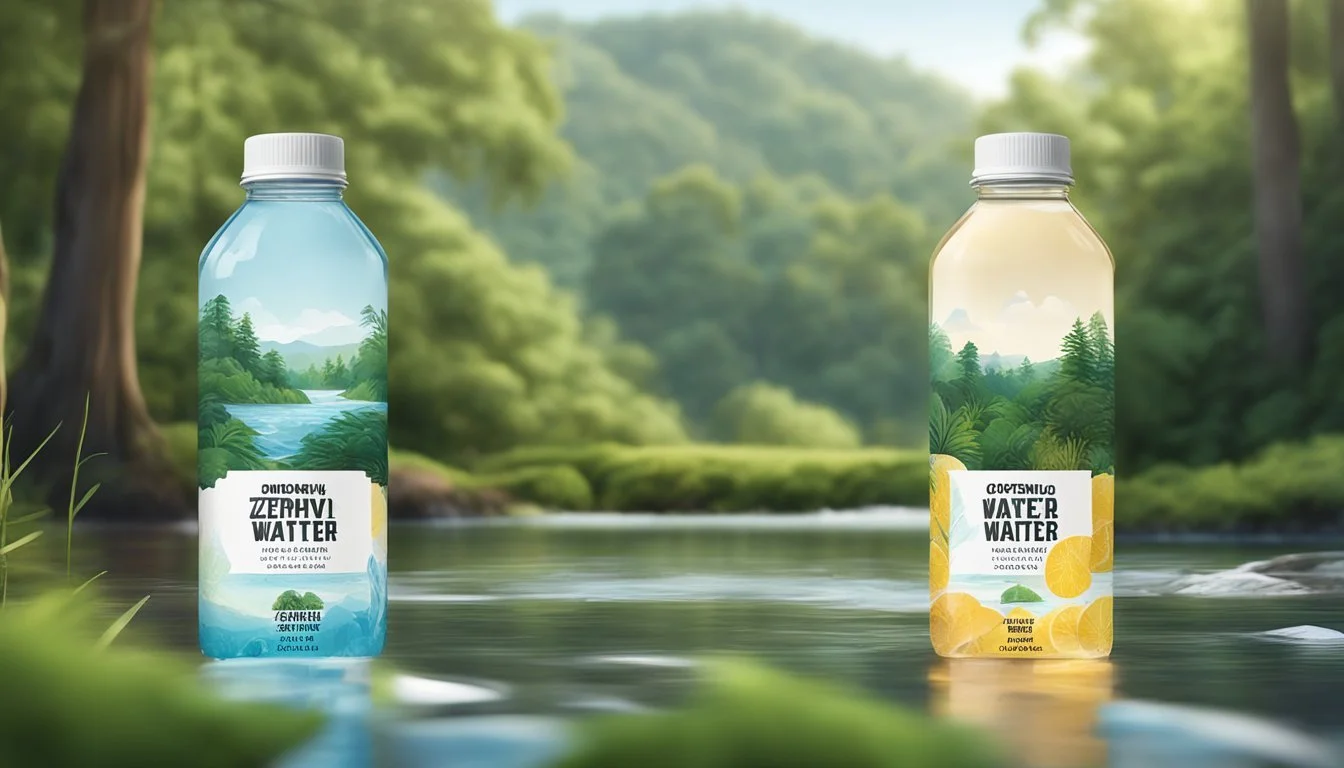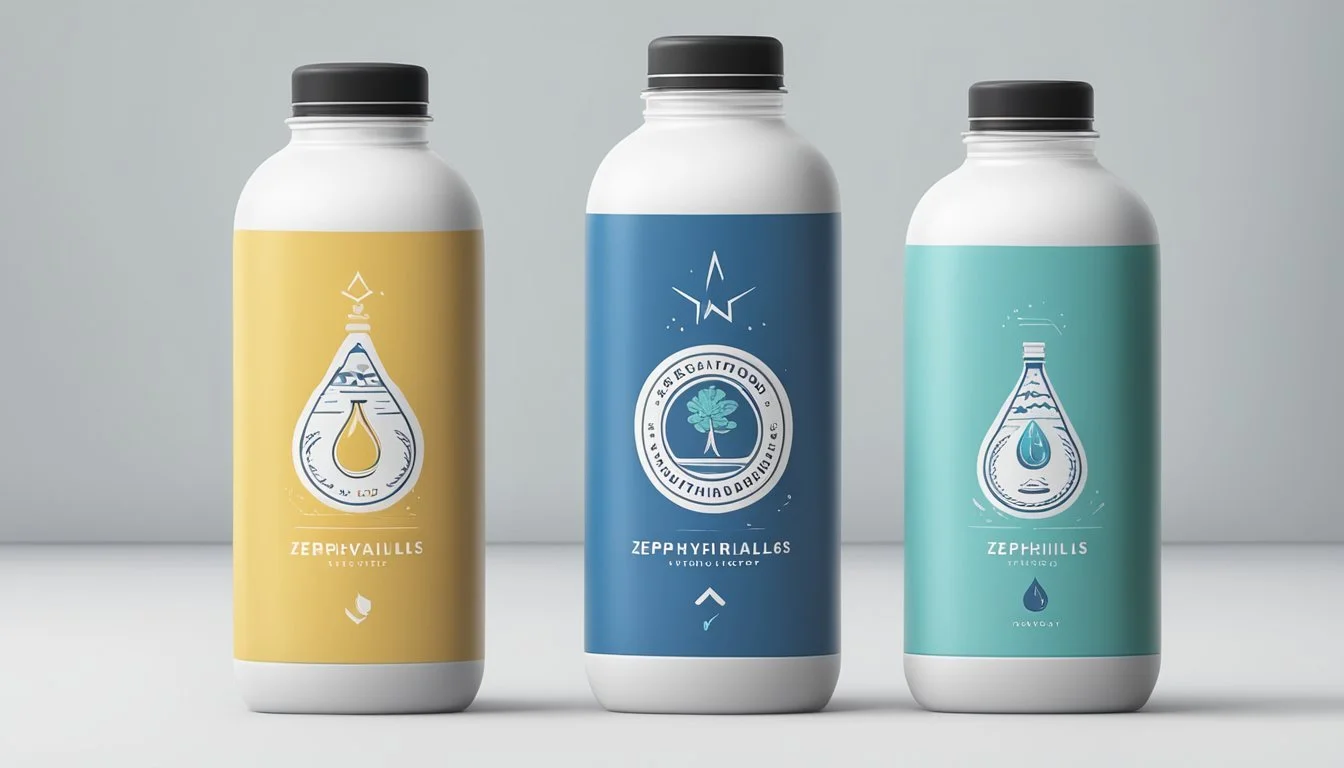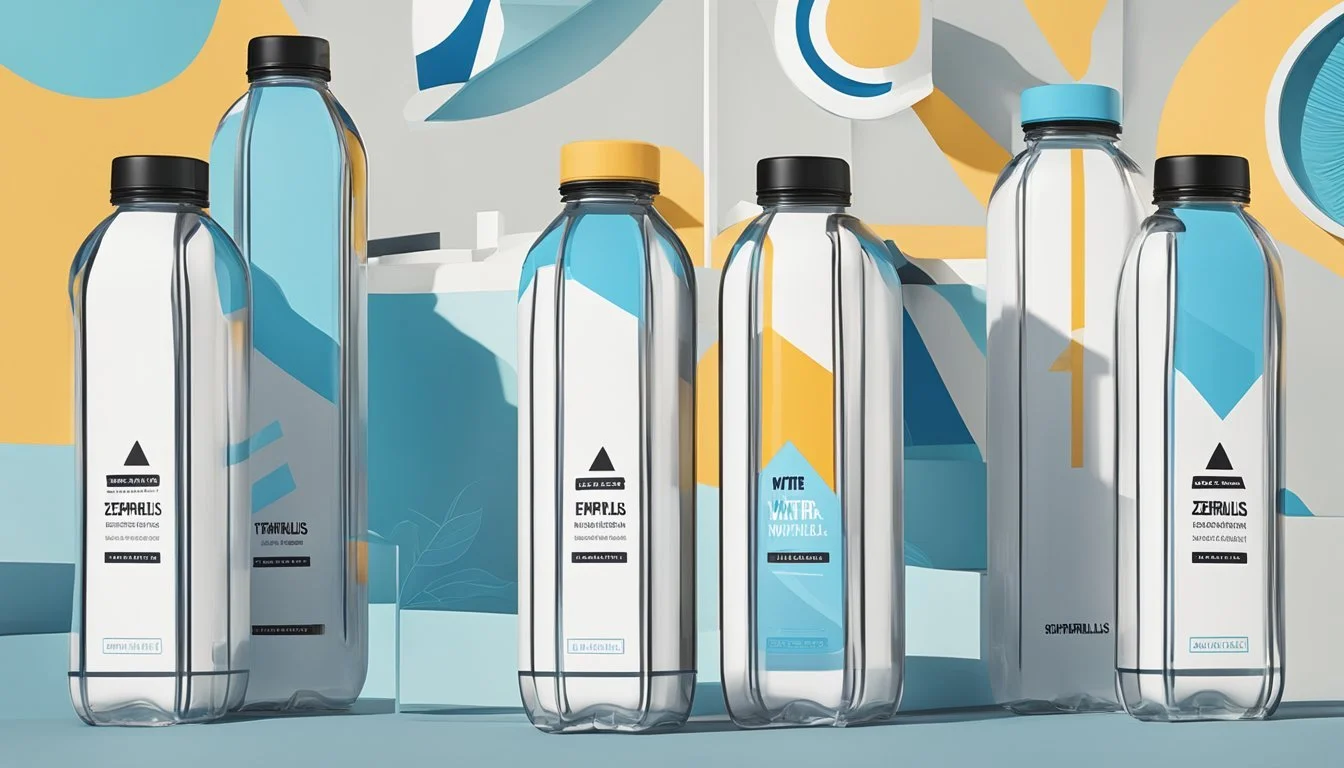Boxed Water vs. Zephyrhills
A Comprehensive Comparison of Bottled Water Quality
In the landscape of bottled waters, consumers are presented with myriad options, each claiming superiority in quality, taste, and environmental impact. Two notable contenders in this market are Boxed Water and Zephyrhills. Boxed Water, a company that offers water in cartons made predominantly of paper, promises a more sustainable alternative to traditional plastic bottles. Touting a design focused on reducing the carbon footprint, Boxed Water emphasizes its use of renewable resources and a packaging process designed to minimize waste.
Zephyrhills, on the other hand, is a brand known for its natural spring water sourced from Florida's springs. Packaged in plastic bottles, Zephyrhills enjoys strong brand recognition in the southeastern United States. It provides a taste that is often associated with the natural minerals from its spring water source. As consumers become more environmentally conscious, the debate intensifies over which product is the better choice, taking into account not only the quality of the water but also the environmental implications of packaging materials and processes.
Both brands serve a market increasingly concerned with the origins and purity of bottled water. This elevated consumer awareness also scrutinizes the environmental ramifications of their choices. The comparison between Boxed Water and Zephyrhills encapsulates the current dialogue between traditional bottled water and alternative packaging methods. It is a reflection of the market's evolving priorities, where factors such as sustainability and source integrity play pivotal roles in the decision-making process.
Environmental Impact
Making an informed choice between Boxed Water and Zephyrhills bottled water requires an understanding of their environmental impact, focusing on materials, their sustainability, comprehensive life cycle assessments, and approaches to recycling and waste management.
Materials and Sustainability
Boxed Water packaging primarily uses paper which is sourced from sustainably managed forests. Its cartons are composed of about 92% plant-based material, with an emphasis on using renewable resources. In contrast, Zephyrhills typically uses plastic bottles for their water, generally made from PET plastic which is derived from fossil fuels, though they do offer some products in recycled and plant-based plastics.
Boxed Water:
Material: Approximately 92% plant-based
Sourcing: Sustainably harvested pine trees
Zephyrhills:
Material: Primarily PET plastic
Sourcing: Fossil fuel-based but with initiatives toward recycled and plant-based plastics
Life Cycle Analysis (LCA)
An LCA considers the carbon footprint from the extraction of raw materials to the end-of-life disposal or recycling of the product. Boxed Water suggests that its carbon footprint is lower in areas such as ozone depletion and global warming potential compared to traditional plastic bottles. However, the full details of the LCA for Zephyrhills’ products are not as publicly available for direct comparison.
Boxed Water LCA Highpoints:
Lesser impact on ozone depletion
Lower global warming potential
Zephyrhills LCA:
Specific data not publicly detailed
Recycling and Waste Management
Recycling is a critical aspect of the bottled water industry's environmental impact. Paper-based products like Boxed Water may offer better recyclability in regions with established carton recycling infrastructure. Conversely, plastic bottles from Zephyrhills are widely recyclable, but the global recycling rates for plastics remain low, potentially leading to higher chances of environmental pollution if not managed correctly.
Boxed Water:
Higher dependency on regional carton recycling facilities
Claims of 74% average recycling rate for paper cartons
Zephyrhills:
Plastic bottles: Widely recyclable in most regions
Global plastic recycling rates remain low, influencing waste management success
Health and Safety Considerations
In comparing Boxed Water and Zephyrhills, it is essential to examine the health and safety implications associated with both brands. This section will discuss the water quality, the hydration benefits to health, and the overall safety considerations of the bottled water products.
Water Quality
Boxed Water:
Source: Derived from municipal sources, then filtered.
Treatment: Utilizes a multi-step purification process, including ultraviolet light, carbon filtration, and reverse osmosis.
Zephyrhills:
Source: Natural spring water from various springs in Florida.
Treatment: Undergoes filtration and ozone disinfection to ensure safety.
Both brands typically meet or exceed regulations for drinking water, ensuring the absence of harmful levels of arsenic, chlorine, and other contaminants.
Health Benefits of Hydration
Maintaining hydration is crucial for good health. Drinking clean water aids in:
Physical Performance: Optimal hydration contributes to sustained energy.
Cognitive Function: Adequate water intake is essential for focus and concentration.
Detoxification: Helps to flush out toxins from the body, maintaining kidney health.
Both Boxed Water and Zephyrhills can provide the necessary hydration, but individuals should be aware of any additives, such as fluoride, that might be present in their drinking water.
Safety of Bottled Water
Boxing and Packaging:
Boxed Water: Typically packaged in paper cartons that are BPA-free and recyclable.
Zephyrhills: Commonly found in plastic bottles, which should be checked for BPA-free labeling.
Environmental Considerations:
Boxed Water: Cartons made of paper, claiming to be more sustainable.
Zephyrhills: Plastic bottles require proper disposal or recycling to mitigate environmental impact.
All bottled water intended for consumption must adhere to safety standards to minimize the presence of harmful substances. Packaging should also be considered for its health implications and environmental footprint.
Economic and Business Analysis
In the realm of bottled water, economics play a crucial role, particularly in how companies like Boxed Water and Zephyrhills navigate market trends and strategize to maintain or expand their consumer base. With attention to sustainability and brand positioning, companies are continuously adapting to the evolving demands of consumers.
Market Analysis
The bottled water industry is a significant segment of the beverage market, with brands like Coca-Cola and Nestlé as key players. Economic considerations include production costs, pricing strategies, and consumer spending habits. These water companies often compete on price points, but niche marketing and shifts toward sustainability can alter market dynamics.
Production Costs: Boxed Water suggests a focus on sustainability by using paper-based cartons, which might potentially influence their cost structures compared to traditional plastic bottles like those used by Zephyrhills, a brand under the umbrella of Nestlé until its sale.
Consumer Preferences: There's an increasing demand for products that claim to be environmentally friendly, with boxed water brands catering to those willing to pay a premium for sustainable packaging.
Market Share: Popular brands have to consider market share, with Coca-Cola and Nestlé historically dominating the landscape. The sale of Nestlé's water division, including Zephyrhills, to One Rock Capital Partners and Metropoulos & Co., indicates a strategic shift which may influence the competition.
Brand Strategies
Brand strategies in the bottled water industry focus on differentiation and image-building, with companies often employing greenwashing tactics to appeal to eco-conscious consumers.
Boxed Water: They emphasize their alternative packaging as a sustainable option compared to plastic bottles, leveraging this characteristic for brand differentiation.
Zephyrhills: The brand's strategy has included sourcing water from Florida springs and emphasizing its natural origins, but with the change in ownership, the brand may adapt new strategies to maintain or grow its market position.
The economic landscape of the bottled water industry is influenced by factors such as sustainability, cost, and consumer behavior, with brands like Boxed Water and Zephyrhills needing to constantly evolve to stay relevant and competitive.
Product Comparison
In assessing Boxed Water and Zephyrhills, it is important to consider both taste and purity along with the variety and options offered by these two brands.
Taste and Purity
Boxed Water prides itself on using multi-stage filtration and UV treatment, ensuring a high level of purity. The brand's clear, crisp taste is frequently noted by consumers and it often performs well in taste tests. In contrast, Zephyrhills is a brand of spring water sourced from Florida, with a taste that is typically well-received, often described as fresh and clean due to the natural minerals present in spring water.
Variety and Options
Zephyrhills offers a range of products including not only their flagship spring water but also sparkling water and flavored water options. This allows consumers a broad selection to suit their personal preferences. Boxed Water, conversely, focuses primarily on its eco-friendly packaging and has a more singular product focus on still water without branching into mineral water or infused flavors. The brand emphasizes its sustainability and environmental impact rather than an extensive product line.
Consumer Preferences and Behavior
In comparing Boxed Water and Zephyrhills, consumer preferences are heavily influenced by factors such as sustainability, convenience, and perceived water quality.
Perception of Boxed vs. Bottled Water
Boxed Water: Consumers often view Boxed Water as a sustainable choice due to its paper-based packaging, which is perceived as more environmentally friendly than plastic bottles. The brand's image is associated with eco-consciousness and appeals to those looking to reduce their environmental impact.
Zephyrhills: Plastic bottles, like those used by Zephyrhills, may receive criticism for their environmental footprint but are still popular for their portability and established trust in water quality. Zephyrhills has brand recognition and a reputation for natural spring water, which can influence consumer perception positively.
Personal Use and Convenience
Portability: Plastic bottles generally have the upper hand when it comes to being lightweight and easy to carry. Zephyrhills bottles offer this convenience, which can be a determining factor for consumers who are on the go.
Usage Habits: Consumers may favor Boxed Water as it aligns with their personal values and the shift towards using sustainable products. However, those who prioritize convenience, such as through the use of personal reusable water bottles, might find the portability of Zephyrhills more fitting to their lifestyle.
In both cases, consumer behavior indicates a strong preference for water sources that offer a perception of purity and that align with their lifestyle choices, be it sustainable living or practical convenience.
Regulation and Standards
In the bottled water industry, regulatory compliance and transparency in labeling are paramount. Consumers rely on strict standards to ensure the safety and quality of bottled water. Both Boxed Water and Zephyrhills adhere to these regulations, prioritizing the health of those who consume their products.
Compliance with Health Regulations
Boxed Water, typically packaged in paper-based cartons, and Zephyrhills, available in plastic bottles, must both meet rigorous health standards. Regulation of bottled water is managed by the U.S. Food and Drug Administration (FDA), ensuring products are safe for consumption. The FDA categorizes bottled water under the "food" umbrella, and as such, Boxed Water and Zephyrhills are required to abide by the Federal Food, Drug, and Cosmetic Act (FD&C Act).
It is imperative for both brands to conduct regular testing for contaminants and adhere to the standards for safety. They must eliminate the presence of harmful substances, such as microbial pathogens, toxic chemicals, and radiological hazards, to meet or exceed the threshold set by the FDA.
Labeling and Transparency
When it comes to labeling, bottled water products must provide consumers with accurate information. Both Boxed Water and Zephyrhills are obliged to include the source of the water and any treatments it has undergone on their labels. This practice ensures transparency and aids consumers in making informed decisions.
The FDA mandates that all bottled water labels must clearly state the type of water in the container, such as "spring water" or "purified water". Additionally, the labels should provide the name and place of business of the manufacturer, packer, or distributor. This requirement promotes a level of transparency that aligns with consumer rights to understand from where and how their bottled water is sourced and processed.
Innovation and Future Trends
In response to environmental concerns, the packaged water industry is observing a shift towards sustainable packaging and responsible sourcing. Companies like Boxed Water and Zephyrhills are at the forefront of these transformative trends.
Eco-Friendly Packaging Innovations
Boxed Water stands out with its distinctive carton-based design, drawing inspiration from the traditional milk carton. Its packaging boasts an impressive 92% plant-based material, making it a leader in renewable content within the industry. This cardboard alternative to plastic bottles represents a significant step toward sustainability, particularly as consumers increasingly favor eco-conscious options. The brand has positioned itself as a pioneer by prioritizing packaging that reduces the reliance on fossil fuels and lowers the carbon footprint of its products.
On the other hand, Zephyrhills, while not as revolutionary in terms of packaging, has made strides in offering products in recyclable plastic bottles. They are also exploring alternative packaging solutions to align with future eco-friendly trends.
Water Sourcing and Extraction
Both companies are acutely aware of the environmental impacts of water sourcing and extraction. Boxed Water sources its water responsibly, ensuring that they do not deplete groundwater resources. Its approach includes using multi-step purification processes, highlighting its commitment to providing high-quality water with a minimal environmental impact.
Zephyrhills sources its water from various Floridian springs, harnessing natural groundwater reserves. They emphasize the natural quality of their water, but they also engage in sustainable practices to manage the extraction process. Efforts to monitor and maintain the integrity of the water source are integral to their operation, ensuring long-term availability and environmental stewardship.
The future of packaged water is veering towards solutions that acknowledge and address environmental concerns. Both innovation in packaging and responsible water sourcing are pivotal trends shaping the industry's path forward.
Conclusion
When comparing Boxed Water and Zephyrhills bottled water, consumers typically focus on several key factors: environmental impact, cost, and taste. Boxed Water claims a more sustainable approach with its 74% paper-based, recyclable packaging, implying a reduced environmental footprint compared to many plastic bottles. Zephyrhills, a recognizable brand, sources water from Florida's springs.
The packaging innovation of Boxed Water offers a paper-based, alternative solution to traditional plastic bottles. It combines paper, aluminum, and plastic film to maintain water quality while emphasizing sustainability. Zephyrhills, while offering a more conventional bottled water experience, promotes its brand with a regional focus and natural sourcing.
Consumers weighing their choices must consider personal priorities such as sustainability preferences, taste profiles, and alternative packaging. Both brands serve the market with unique selling points, and one's choice may align more closely with individual values and needs.
Boxed Water:
Pros: Sustainable packaging, recyclable
Cons: Contains plastic and aluminum, cost
Zephyrhills:
Pros: Natural spring water, taste
Cons: Plastic bottles, environmental concerns
In terms of sustainability, Boxed Water might be preferred. However, for taste and regional brand loyalty, Zephyrhills could be the choice. The bottom line is that the decision rests with the consumer, whose preferences and values will guide their selection.






